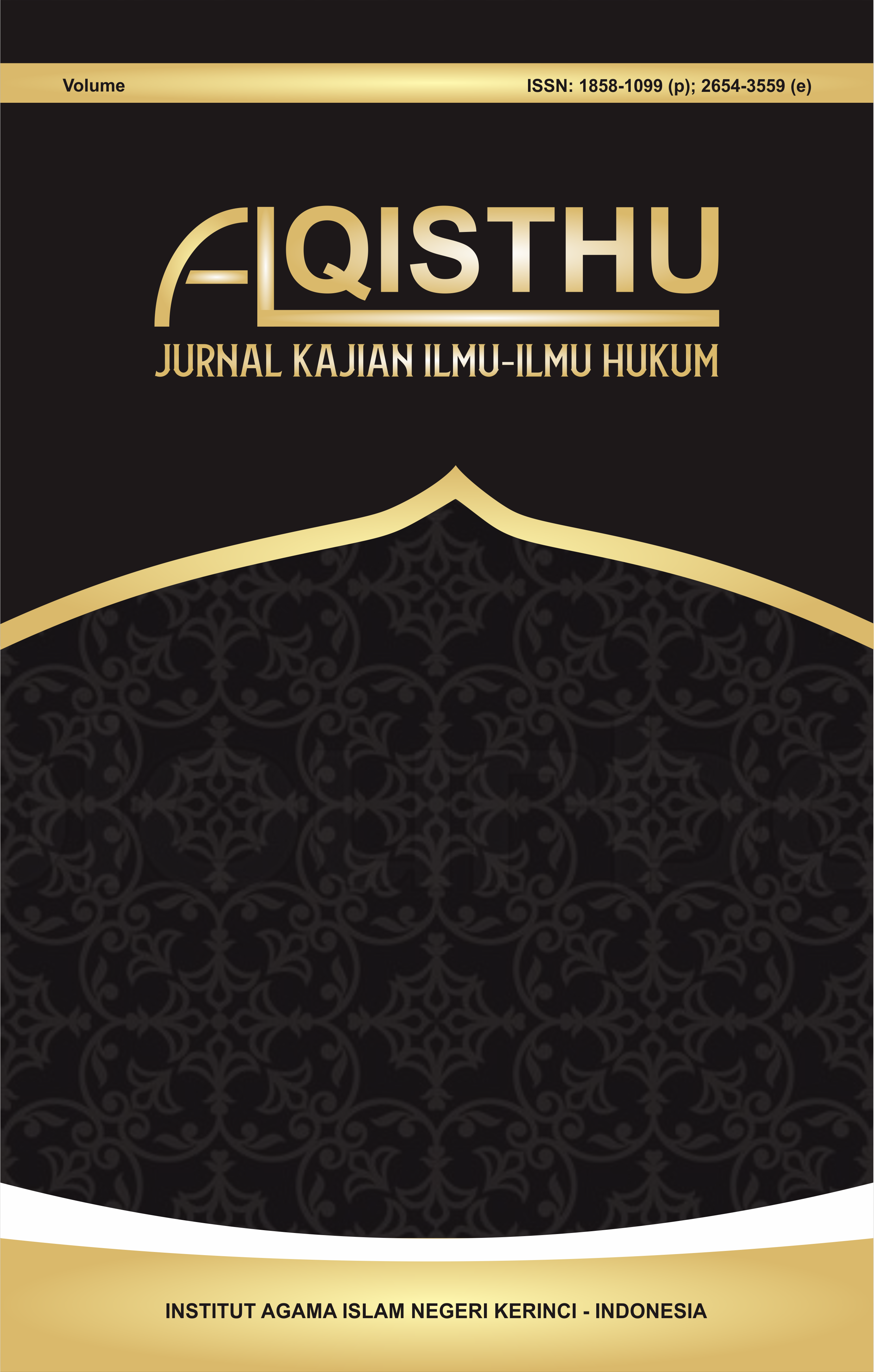Studi Komparatif Fatwa MUI dan LBMNU Jawa Timur tentang Kehalalan Karmin sebagai Bahan Tambahan Pangan
Abstract
The differing opinions on the halal status of carmine between the Indonesian Ulema Council (MUI) and the East Java Bahtsul Masail Nahdlatul Ulama (LBMNU) have raised questions regarding the ijtihad methodologies employed by these two institutions. This study aims to examine the differences in methodology, legal reasoning, and Islamic jurisprudential approaches utilized by the two institutions in determining the halal status of carmine. The research employs a qualitative method with a descriptive-comparative approach, based on an analysis of fatwa documents and relevant literature. The findings indicate that MUI declares carmine halal through a tahqiqul manath approach, incorporating empirical research and considerations of utility, whereas LBMNU prohibits carmine using a textual approach that bases its decision on the impurity of insect carcasses according to the Syafi'i school of thought. These differences suggest that MUI adopts a more adaptive stance toward modern contexts by integrating scientific aspects, while LBMNU prioritizes preserving the tradition of the Syafi'i school. This study underscores the importance of balancing methodological flexibility and adherence to traditional jurisprudence in addressing contemporary challenges.
Downloads
References
Ahmad, R., Mohd Razif, N. F., & T.M, T. S. (2019). Analisis Pemakaian Pendapat Fiqh Mazhab Syafie dalam Pandangan Hukum Halal Haram Aditif Makanan di Malaysia. Jurnal Fiqh, 16(1), 105–128. https://doi.org/10.22452/fiqh.sp2019no1.5
Al-Nawawi, M. ibn S. (n.d.). al-Majmu’ Syarh al-Muhadzdzab li al-Syairazi Juz 1. Maktabah al-Irsyad. https://www.shepangaropustaka.com/2021/06/download-kitab-al-majmu-syarah-muhadzab.html
Bawono, A., Saputra, Y., & Annur, F. (2022). Analysis of Gen Z Muslims’ Interpersonal Behavior in Halal Food Purchasing in Indonesia. Journal of King Abdulaziz University, Islamic Economics, 35(1), 99–115. https://doi.org/10.4197/Islec.35-1.6
Bukhari, M. bin I. (1973). al-Jami’ al-Shahih. Dar al-Kutub al-Ilmiyah.
Edu, N. A. R. detik. (n.d.). kutu-daun-ini-jadi-sumber-pewarna-alami-karmin-bagaimana-sejarahnya @ www.detik.com.
Fatwa MUI. (2011). Fatwa MUI No. 33 Tahun 2011 Tentang Hukum Pewarna Makanan dan Minuman dari Serangga Cochineal. 1–5.
Fikr, D. (2011). Hukum Mengkonsumsi Cacing (Studi Perbandingan Mazhab Maliki dan Mazhab Syafi’i). 1–21.
Jannah, S. M., & Al-Banna, H. (2021). Halal Awareness and Halal Traceability: Muslim Consumers’ and Entrepreneurs’ Perspectives. Journal of Islamic Monetary Economics and Finance, 7(2), 285–316. https://doi.org/10.21098/jimf.v7i2.1328
Kasus, S., & Kecamatan, B. (2022). TAWAS DAN PEWARNA SINTETIS PERSPEKIF IMAM SYAFI ’ I SKRIPSI Diajukan Sebagai Salah Satu Syarat Untuk Memperoleh Gelar Sarjana Hukum Strata 1 ( S-1 ) Pada Jurusan ( Muamalah ) Fakultas Syari ’ ah Dan Hukum UIN Sumatera Utara HUKUM EKONOMI SYARI ’ AH ( MUAM.
Kusnadi, A., Arkeman, Y., Syamsu, K., & Wijaya, S. H. (2023). Designing Halal Product Traceability System using UML and Integration of Blockchain with ERP. Register: Jurnal Ilmiah Teknologi Sistem Informasi, 9(1), 29–41. https://doi.org/10.26594/register.v9i1.3045
Los, U. M. D. E. C. D. E. (n.d.). https://www.idntimes.com/science/discovery/nena-zakiah-1/mengenal-dactylopius-coccus.
mui-jenis-serangga-beragam-fatwa-halal-karmin-melalui-penelitian-empirik-libatkan-pakar-serangga @ mui.or.id. (2023).
Mundzir, M. (2021). Metode Penetapan Fatwa Majelis Ulama Indonesia (Analisis Penggunaan Qawaid Fiqhiyyah sebagai Dalil Mandiri dalam Fatwa). The Indonesian Journal of Islamic Law and Civil Law, 2(1), 1–18. https://doi.org/10.51675/jaksya.v2i1.161
Nawawi, I. A. Z. muhyiddin bin S. (2003). Majmu’ Syarah al Muhadzab.pdf.
Prayuti, Y. (2020). Muslim Food Consumer Protection Through the. 14(1), 1–9. https://doi.org/10.14421/asysyir
Royani, S., & Fitriana, A. S. (2021). Pengenalan Zat Aditif pada Makanan di Perumahan Ketapang Indah Kabupaten Banyumas. Jurnal Abdimas PHB, 4(2)(2), 219–223.
Salleh, M. M. M., Ahmad, N. M., & Fadzillah, N. A. (2020). Cochineal Food Coloring from Halal Perspective: A Fatwa Analysis in Several ASEAN Countries. Journal of Fatwa Management and Research, 19(1), 1–14.
Yusop, M. H. M., & Bakar, M. F. A. (2020). Review on halal forensic: A focus on dna-based methods for pork authentication. Food Research, 4(6), 2347–2354. https://doi.org/10.26656/fr.2017.4(6).180
Copyright (c) 2024 Faishal Akbar Romadhoni, Soni Zakaria, Ahda Bina Afianto

This work is licensed under a Creative Commons Attribution 4.0 International License.















